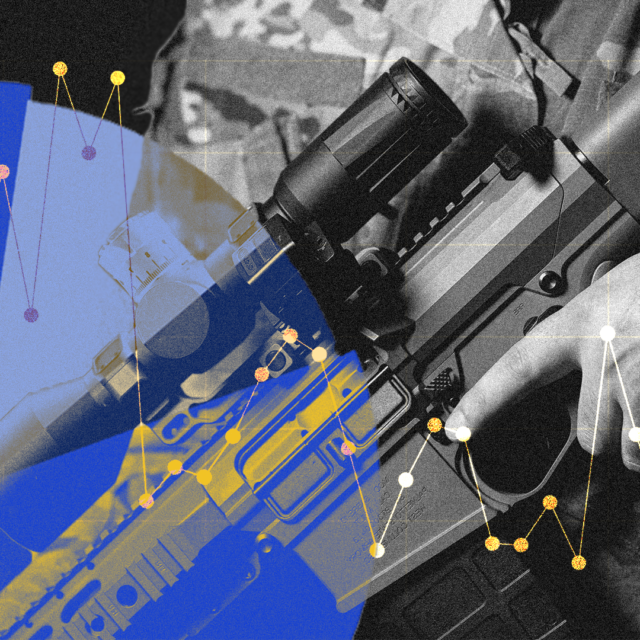Suicidal crises are often very brief, and ensuring that someone experiencing a crisis does not have easy access to lethal means can prevent a moment of despair from becoming an irreversible tragedy. When someone is experiencing a suicidal crisis, their family members and friends are often the first to see signs—as such, we consider them “natural helpers.” In such high-stakes emotional situations, it can often feel like there is nothing they can do, but working with a loved one to reduce access to guns can be life-saving. Effective suicide prevention policy should both work with those at risk of a suicidal crisis and engage, educate, and empower natural helpers and give them a variety of gun-access intervention options.
Gun access interventions exist on a continuum (see figure below): a chain of actions that can be taken depending on the severity of the crisis and other factors, including whether the person in crisis owns firearms, how many firearms are in the home, how those firearms are stored, and how willing the person is to voluntarily reduce their own access to firearms. Once engaged and educated about the continuum, natural helpers, including healthcare providers, counselors, and other crisis responders, can work with those in crisis to determine which interventions make the most sense for their particular circumstances. If an intervention or tactic is not successful in creating time and space between the person and their firearm, or they are not receptive or willing to remove access to firearms, natural helpers can pivot to an intervention that is more likely to increase time and space.
-
Storing firearms locked, unloaded, and separate from ammunition is one of the key principles of responsible gun ownership. Secure gun storage is also an essential practice to reduce youth suicide as over 80 percent of firearm suicides by children (age 18 or younger) involve a gun belonging to a family member. Secure in-home gun storage may not be the most effective intervention to create time and space between an adult in crisis and a firearm, but the principles of secure gun storage are the foundation for many gun access interventions on the continuum.
-
Individuals in crisis can further reduce access to household guns by securing them in a locked storage device (such as a lockbox, gun safe, or gun vault) and, in times of crisis, give the keys to the device to a trusted friend or family member (for combination-locked or biometric storage devices, combinations or fingerprints can be changed so that only the friend or family member can access the safe). By accepting the keys, natural helpers can help a loved one disrupt access to firearms without disrupting possession.
-
Individuals at an increased risk for suicide, or in suicidal crisis, can put more time and space between themselves and any household firearms by voluntarily storing firearms outside the home, such as at a gun dealer or with an eligible family member. Gun storage maps have been developed by several states and localities, including
Colorado,
Maryland,
Mississippi,
New Jersey,
New York, and
Washington State to increase public awareness of out-of-home storage options.
-
Some states have created a process by which individuals who know they are at risk for suicide can voluntarily block themselves from purchasing, and in some cases possessing, a firearm for a limited period of time, known as Voluntary Do Not Buy Lists or Voluntary Prohibition Lists. In 2016, a team of researchers found that of a sample of individuals considered at high risk of suicide, 46 percent stated they would put their name on such a list.
-
When a person is in crisis and considering harming themselves family members are often the first people to see the warning signs.
Extreme Risk laws allow loved ones or law enforcement to intervene by petitioning a court for an order to temporarily prevent someone in crisis from accessing guns — known as an extreme risk protection order (or ERPO).
Everytown Research & Policy is a program of Everytown for Gun Safety Support Fund, an independent, non-partisan organization dedicated to understanding and reducing gun violence. Everytown Research & Policy works to do so by conducting methodologically rigorous research, supporting evidence-based policies, and communicating this knowledge to the American public.



